Anthora, Yellow Aconite
Antithora, Zedoaria Avicenna, Napellus Alexipharmicum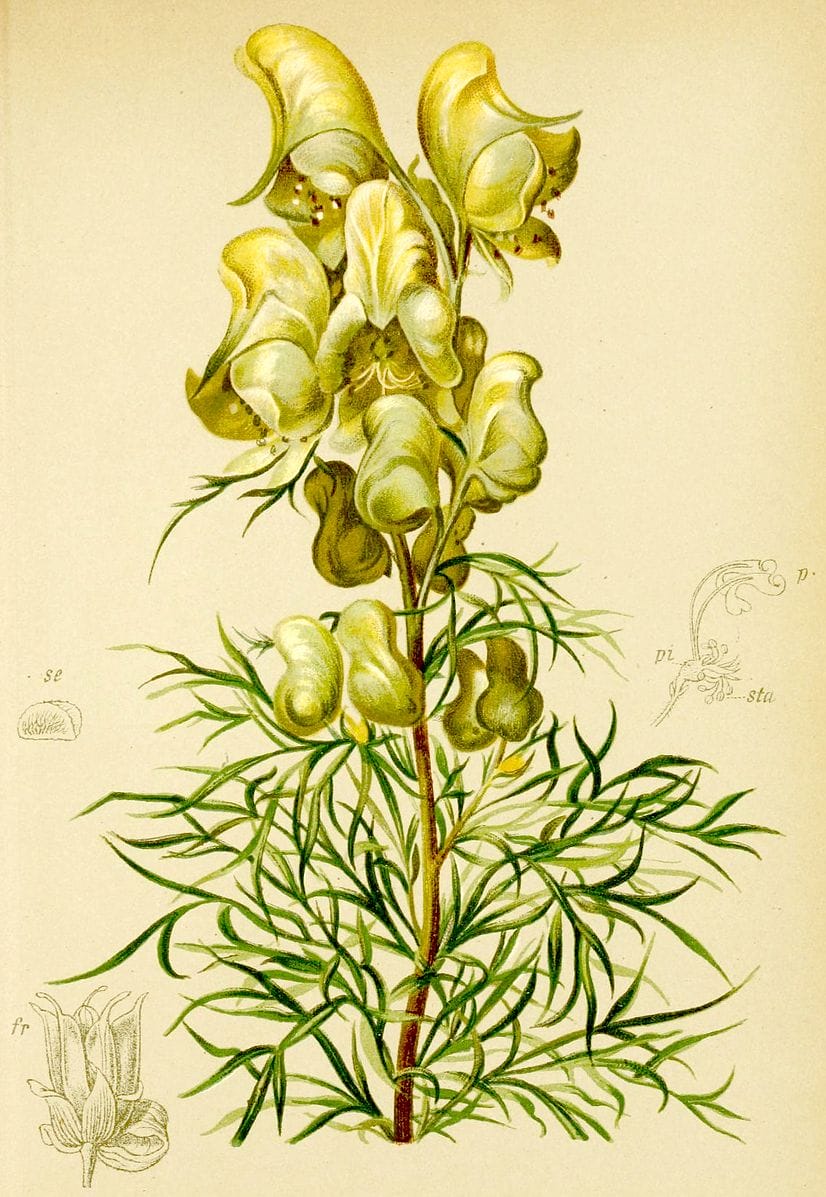 Atlas der Alpenflora, Hartinger, 1882
Atlas der Alpenflora, Hartinger, 1882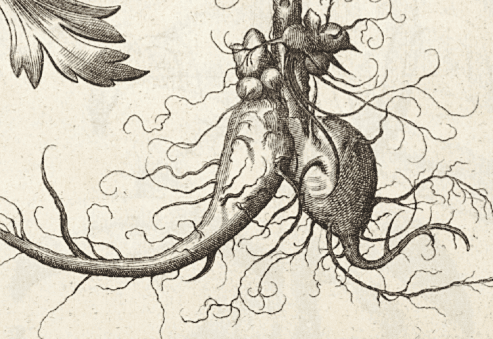 Hortus Eystettensis, 1613
Hortus Eystettensis, 1613

|
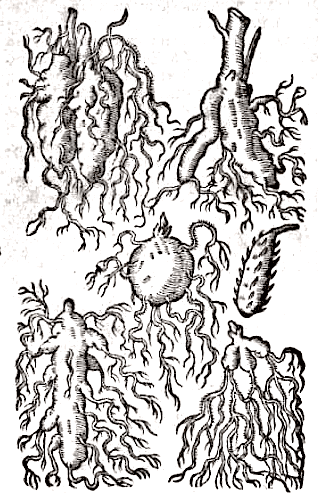
|
|
New Kreuterbuch, Matthiolus, 1563 |
Various Anthora roots New vollkommen Krauter-Buch, Theodorus, Bauhin |
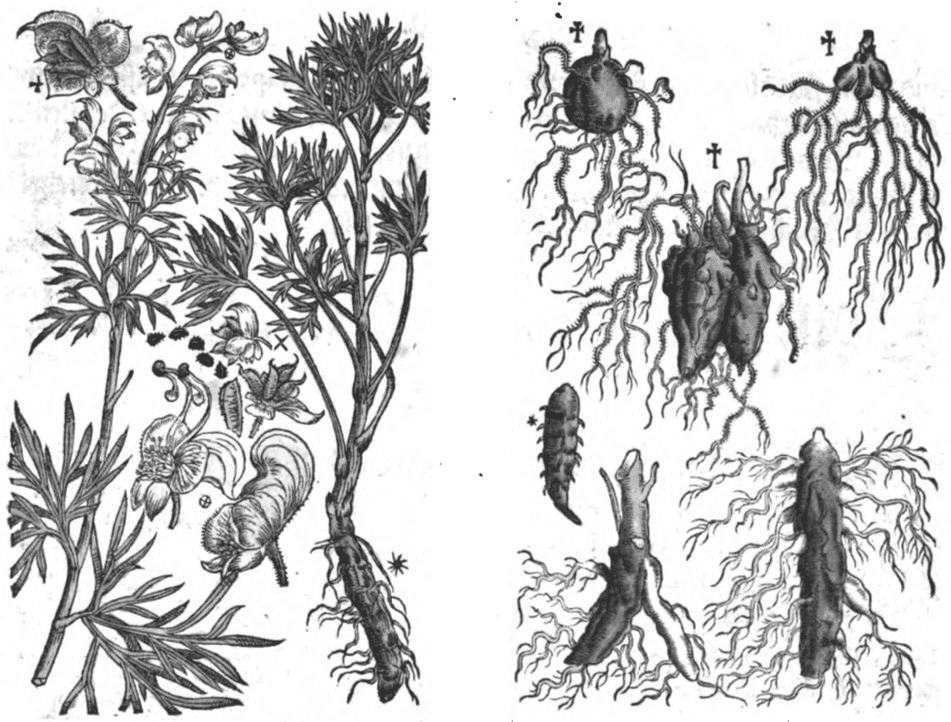 Left: Anthora; Right: Anthora roots
Left: Anthora; Right: Anthora rootsKreutterbuch, Matthiolus, 1586
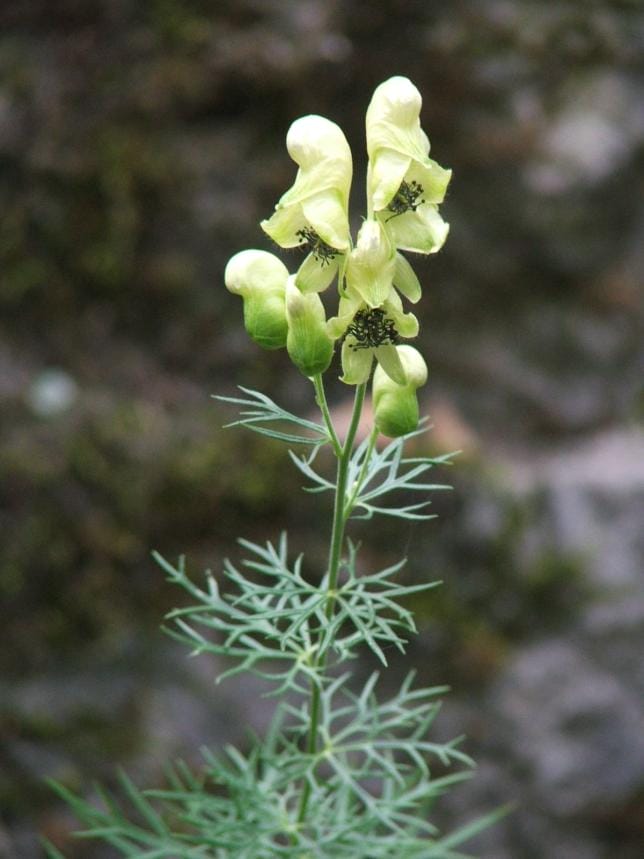 (Photo by Pipi69e) (Wikimedia)
(Photo by Pipi69e) (Wikimedia)Botanical name:
Aconitum anthora
Parts used:
root
Temperature & Taste:
Cool, dry. Bitter, Pungent (Salmon said Hot and dry)
Uses:
1. Resists Poison:
-‘good in all venomous diseases, Plague, Poison &c.’ (Salmon)
-Malign and Burning Fevers, Measles, Small Pox
-‘an enemy to all Poisons’ (Gerard)
-especially regarded as an antidote to the poisonous Aconites and Leopard’s Bane
-Venom and Poison including Snakes, Rabid Dogs, Scorpion, Wasps, etc.
-used in compounds for its antidotal and detoxicant effects.
2. Moves the Blood, Benefits the Heart:
-‘Comforts the Heart’ (Salmon)
-‘a most Sovereign Cordial’ (Salmon)
3. Clears Damp, Promotes Urine:
-strong to promote urine;
-‘it voideth by the stool both watery and slimy humours’ (Gerard)
4. Kills Worms:
-used by some for Worms
-‘all manner of worms in the body’.
Dose:
Root in Powder was regarded as more effective than the infusion or decoction.
1–3 grams of the Powder (Salmon said up to 2 drams [6 grams] in Powder)
Salmon said as much as a Bean take with wine or broth purges Watery humors by Vomit and Stool.
Acid (Vinegar) Tincture: add enough to drink to give a pleasant acidity, used in the treatment of Poison and Venomous bites etc.
Substitute:
1. Zerumbet or Zedoary have been used as substitutes
2. Salmon relays that a physician by the name of Guainerius regarded Anthora as effective as White Dittany for all the purposes for which it was used. Dittany may therefore be a suitable substitute.
3. Seeing this is similar to the Eastern Aconitum heterophyllum which is another non-toxic species of Aconite, Cyperus rotundus could possibly be used as a substitute as it has been recommended as a substitute for A. heterophyllum.
Main Combinations:
1. Against poison and infection Anthora with Red Earth, Tormentil, Angelica, Masterwort (as in Orvietan Antidote)
Major Formulas:
Orvietan Antidote
Cautions:
1. Although accounted non toxic, overdose should be avoided
Main Preparations used:
-
Extra Info
-
History
|
‘Aconitum Anthora Linn. Yellow helmet flower: a plant with divided leaves, and naked flowers confiding of five petals, the uppermost of which is shaped like a hood: each flower is followed by three or more pods, containing wrinkled angular seeds. It is distinguished from the other aconites or wolfsbanes, by the leaves not being glossy, by their being cut quite down to the pedicle, and by the segments being very narrow and of nearly the same width from end to end. ‘This plant is a native of the Alps and Pyre-neans, from whence the dried roots are some-times brought to us. They are generally of an irregular roundish shape, sometimes a little oblong, of a brown colour on the outside and white within, hard to break, but not tough. ‘The root of anthora has a faint smell, and an acrid bitter taste, constringing the fauces and throat, accompanied with a kind of nauseous sweetishness. Its medical qualities are doubtful. |
Some look upon it as a safe anthelmintic, an useful alexipharmac in malignant fevers, and even as an antidote to the poisonous aconites, particularly the species called thora, from its supposed efficacy against which it is said to have received its name: others ascribe to it virulent qualities, and relate instances of its occasioning vomiting, purging, great disorders of the stomach, heat, thirst, and anxiety. A competency of experiments, to fully determine this point, is as yet wanting: possibly this root, like many others, may be possessed of noxious qualities when fresh, which are in great measure dissipated or destroyed by drying or long keeping. But as all the salutary effects, that can be rationally expected from this drug, are obtainable from medicines of known innocence; common practice has never received the anthora, and the colleges both of London and Edinburgh have now expunged it from their catalogues of officinals.’ (An Experimental History of the Materia Medica, William Lewis, 1791) |
